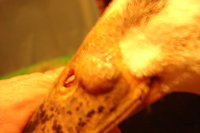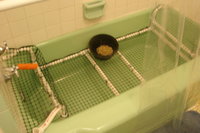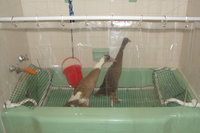View attachment 1201725 My duck has a swollen bill between the nostrils and the top of the bill, more on one side than the other but on both sides. She is beginning to find it hard to breathe through her bill. Her cheeks move in and out with each breath. (If I force her mouth open, she breathes perfectly easily since she has no issues with her breathing passages and lungs. But she becomes angry with me and prefers her mouth closed...)
I tried to put a needle into the swelling to withdraw fluid. No fluid. Slight amount of blood from needle poke which stopped immediately and easily.
Tonight she seems unhappy and she is a bit overwarm.
Any ideas as to the cause and what I can do to help her?
I tried to put a needle into the swelling to withdraw fluid. No fluid. Slight amount of blood from needle poke which stopped immediately and easily.
Tonight she seems unhappy and she is a bit overwarm.
Any ideas as to the cause and what I can do to help her?
Last edited:









